Demolish it, declare it or make history a museum
- In the region of Pamplona, and in Navarre in general, if you talk about historical memory at the moment, the question of the Memorial to the Fallen will come out with force on the table. The building was built in 1942 to pay tribute to the deaths that had been raised in defense of Franco. Most of the memorialist associations have called for the demolition of the monument because they consider its standing to be a permanent insult to the victims of the 1936 War. For others, another meaning should be given to the place, always starting from the critical historical memory and as a tool against the fascist mentalities. Many articles and information have gone to the media, mostly supporters of demolishing or maintaining the building and giving another meaning; the latter talk about the need to replace it. The City Council of Pamplona owns the monument since it was handed over in 1997 by the Archbishop of Pamplona and Tudela. The Mayor of Pamplona, Joseba Asiron, has announced his intention to promote a participatory process in this legislature, although a concrete path has not yet been established. To talk about this, we have put together the following quartet: two of the diners are in favour of demolishing the monument, two against. These are two solid arguments on each side, and in the following pages the reader will find juicy ideas to better position himself on this complex issue.

.jpg)
Before we go into the subject of the memorial to the fallen, let us look a little bit at the field of historical memory in Navarra. At the end of the last century, and especially in its beginnings, much has been said and advanced in historical memory. How are we today? What are you doing right? How should we continue?
ASUN LARRETA In Navarre we have pioneered memory issues at the state level, from the times of early exhumations to the present day. The main objectives of historical memory are truth, recognition, justice, reparation and guarantees of non-repetition for victims and their descendants. Although much remains to be done, the work carried out by the memorialist associations in the field of recognition in collaboration with the institutions is yielding very important results: excavations, DNA identifications, tributes, in the research the Documentary Fund of the UPNA, the search engine Oroibidea, publications, the educational program Schools with Memory ... In the field of Justice, on the contrary, we find the Amnesty Secrets of 1977. Disputes are in Argentina or in European courts.
I would like to pay attention to the guarantees of non-repetition, because we have to transfer to the citizens that the victim of Franco was the whole of society and explain why the coup d’état took place. And why was it? Because they could not withstand human progress and to do so they had to master the will of the people. If society is well informed, in the future it will be able to prevent neo-bureaucratic messages and will be willing to deal with them.
Those who do not want to change anything use strategies adapted to times and situations to continue to dominate society and prevent it from being egalitarian. I believe that to denounce what happened in our tragedy, the critical reflections, those horrors will help them not to repeat themselves; the challenge is to reach the whole of society.
FERNANDO MENDIOLA: Yes, here we have pioneered many things, among them are the exhumations of the Transition or the book of Altaffaylla, which marked a before and a after in the 1980s (Navarra 1936 From Hope to Terror). I believe that in the State and in Navarre we have a fairly good memory situation, and we are still pioneers. But there are also problems, such as that of impunity: judges are still based on the Amnesty Law in order not to give guarantees of justice in the human rights violations of Franco. And as Asun has pointed out, there is no guarantee that the truth is known, because there is the Law on Official Secrets.
Coming to Navarra, we are pioneers in education with the program of Schools with Memory. We also have two funds, one at the UPNA, based on historiographical criteria and the other, the Memory, connected with it and with different multimedia resources.
Challenges? One is reaching out to young people, as seen in the associations and in the mobilizations; there is a certain rupture. We must ensure that the subject of historical memory is also useful in the face of current problems. In any case, we cannot think that memory is a medicine to cure anything, we only have to see what is happening in Germany, where a rise of the far right is taking place. The lack of sensitivity towards Gaza is also very significant in view of the fact that very advanced policies of historical memory on genocide have been made in Germany.
.jpg)
De Fernando Mikela: Yes, much has been done in the State and in Navarre, but much remains to be done. There are two kinds of memory, the memory of the left and the memory of the right, and here the memory of the right has still been imposed. Those who have managed the historical memory so far have left an important gap: the victim, both in Spain and in Navarre. In the panels that exist in every corner of the memory of Navarra nothing is mentioned about the victimizer, the article that I published in August [Valcaldera: incomplete memory of memory places]. That cannot be understood.
In the memory laws that have been made, there are regrettable loopholes, both around monuments and in the reference to politicians. The role of official historians must also be analysed. It is true that the Secret Law and the Amnesty Law are limits, but so is the amnesty of historiography, which makes it very difficult to publish research in academic journals.
In my opinion, Navarre is not an example to follow in terms of memory. In the quoted book of Altaffaylla, for example, the lists of victims appeared, but at the entrance, José Mari Esparza made it clear that the Carlists had not led the repression, as all the Carlists had gone ahead. That is not true. I do not know why, it is an issue that almost nobody wants to deal with in Navarre, and in this area not much progress has been made. I believe that the greatest challenge is for institutions, governments, municipalities and universities to accept the development of critical memory without putting any obstacles in the way.
AMAIA LERGA: The memory work began since that woman placed the first flowers in the pit, and has continued to extend until the first disobedities were made or with a strong memory movement that has developed since the year 2000. From there, a continuous dialogue was started with the institutions that culminated with the approval in the Parliament of Navarre of a declaration of memory in 2007 that would provide the Historical Report of Navarre in 2013.
This law was state-level pioneering and most things were complied with. The acts of tribute to the Navarros in the concentration camps in Germany have been deserted. Therefore, the law is practically complied with, but it must be borne in mind that, in truth, justice and reparation, the law provides for a very initial development, so as far as the victims of Franco are concerned, the majority of it has yet to be done. Some of the people I receive today in this office still don't know anything about their relatives. And when do those people come here? After many acts of memory, therefore, you see the importance of realizing them.
Starting in 2016, we are at the stage of the institutionalization of memory, where this work balance between institutions and movements is being generated. The closer we are to the movement of the people in memory, the more they will care for the rights of the victims.
Challenges? A lot. For example, impunity. An example of this is, for example, the Memorial to the Fallen, in which social silence is still standing. The simplest aspects of the law have been complied with and now the most complex are missing, as has been specified here, for example, the perpetrators. Time is also key, otherwise we are not going to reach this last generation of victims, because they are dying.
.jpg)
F. MENDIOLA Xabier [addressed to the moderator], before moving on to the second question I have to answer Mikel's necessarily on some issues. I did not intend to go into the article you published the previous day, but you have also done so now, and in it you say that in Navarre the institutions that manage the historical memory and the UPNA are continually avoiding clashing with the negationist trend. To begin with, Altaffailya’s book mentions the names of more than 100 executioners, by name and surname, of which dozens are Carlists, Falangists, priests… The Carlists are constantly cited as executioners. At the entrance, on the other hand, what you mention is not said. At the Museum of Carlism in Navarre, it is literally said that Carlism joined the reaction and Italian fascism against all the democratic reforms that the republics launched. And it's also said, literally, that carlism had a direct responsibility in repression.
The Government of Navarra and the Historical Memory Fund of the UPNA have published a report and maps on the captivity centres of Pamplona. They are available on the Internet and explain who was responsible, including carlists. In Navarre, historians have been researching the subject for decades, identifying executioners with names and surnames, institutions, companies… and we have no great problems publishing them. The main problem lies in the sources of information. A lot of documentation has been removed or is not yet available.
F. De Mikel: I gave a clear and accurate view of the victim in the book Merciless, and that has brought me a complaint from [Jaime Ignacio] Del Burgo. No one has ever made you want, I have. I haven't had any resources to do the research I've done, Fernando, I've had to pay everything...
F. MENDIOLA No one denies the value of these works, on the contrary. I myself have publicly praised that book. On the other hand, who organized the campaign to support you?
F. De Mikel: And you cannot compare what is said in Altaffaylla's book or what I say in my books. And I don't understand how they engage in that lockdown to build a chiringuite that nobody's going to get in.
F. MENDIOLA It is a serious and unfounded accusation, but we have not come here to talk about it. I shall not go into that discussion now.
No, we will not continue this debate, this is not the place for it, and we will therefore go directly into the matter of the Memorial to the Fallen. At the moment, there are three main positions: one, to knock down the monument; two, to keep it and turn it into a space of memory; and three, to turn history into a museum, without going into critical memory issues. Can you explain your opinion?
A. LARRETA: In my opinion, only reversibility can be made to the monument by completely modifying its current meaning, that is, by making use contrary to its current meaning. The monument paid tribute to the fallen in the crusade, but they are no longer public. The meaning of mausoleum was lost after exhuming the remains. As for its use, the monument is in the process of losing its meaning, but that does not mean that it is added. The reaffirmation would mean becoming a mausoleum of the Republican victims, exalting the victims of Franco and the Republican government, but that doesn't happen to anyone.
Therefore, my proposal for the monument is to use it to denounce its meaning and to break its ideological imprint. How? Radically transforming the exterior aspect and building in it an interpretation center where the causes of the human rights violations committed by the Franco regime will be exposed, not only the consequences and the massacre committed. The Interpretation Center should replace the current facade, breaking the character of the architecture of the city, the milestone of the current monument.
Part of the monument explains to us that it was one of the greatest genocides carried out in the name of the god and an example of human dehumanization. The dome contains images of Ramón Stolz, in which Navarre is religious and warrior, with superstitious, supremacist, dominant and destructive content against progress and freedom, and all this would be used to explain and denounce the causes and consequences of the coup d'état. The centre of interpretation should turn feelings of exaltation and humiliation into awareness building material so that violent events are not repeated, showing and denouncing a dominant attitude.
It is the only monument of the State that is located in the center of the city and a unique material of historical events, so we take advantage of it to critically document present and future generations.
.jpg)
F. MENDIOLA This monument is in itself a passionate apology of war and fascism, and on that we agree the four. It's a demonstration of power from the inside and from the outside over the city. So what do you do to break this hegemony? From the collective Caidos Irauli we propose radical transformation, from the inside and from the outside. The elements of the interior are historical documents, crypt, dome paintings, list of falls -- all the architecture, after all. From the outside, it should also change radically: throw a piece, perhaps cover a piece… that is, break the hegemonic presence of the building over the city.
At European level, this is the only building to be used: it transmits fascism and the values of the holy war, together with the exaltation of racism and colonialism. And let us not forget that the names of the falls that occur in them, most of them went to war by recruitment and obligation. In Navarre, thousands of young volunteers went to war, carried by carlism, but forced to thousands more.
F. De Mikel: I am in favour of demolishing the monument. On the one hand, it is a constant insult to the victims. On the other hand, because this monument is a great courage towards the way in which we have managed the past in this community. We have mismanaged the past and are continuing on it. I do not believe that another meaning can be given to the building, and that is what those who want to keep the building up know. Among the signatories of the manifesto for the maintenance of the building are many children of the requetés.
The fascist character of this monument is, in particular, the one that is made to extol the memory of the requetés. It was built by the Provincial Council of Navarra, with the collaboration of the Brotherhood of Knights Volunteers of the Cross, and has been mainly used by the latter. In 1965, the deputy of Huarte and Urmeneta, at the initiative of the latter, thought of giving a new meaning to the monument, but no one accepted it. A few months earlier, however, tribute was paid to Esteban Ezkurra, the head of the massacres of the requetés, to which many people went.
I do not believe that there is any possibility of giving other meaning, among other things, because the public institutions and universities here do not want to go into the issue of victimizers, and without that you cannot give expression. And in the end, that's what's going to happen. So I think the best option is to knock it down. And then, if you want to do something else on that plain, well, but you have to do it with a decent procedure, which I have not seen so far. The projects of that competition, which were presented in the process processed by the City Council of Pamplona, for example, had little restorative memory.
.jpg)
A. LERGA: We have been working for demolition for many years. The building is an element against democratic memory, a tribute to the victims of the coup and a permanent insult to the more than 3,500 Navarros killed and the rest of the repressive forces. Decades later, the meaning of this monument remains virtually the same, the two communities emerge from the time of the war and a part of society defends it to continue like this. The monument is composed of several elements: what it represents, its size, its place, its architecture, its memory… and we believe that of all of them we must prioritize that of human rights, and from there we defend the demolition. The monument once again turns the victims of Franco into victims and frustrates their rights. The significance of the monument itself is so great that it cannot be given any other meaning.
It would be great to be able to make the first Francoist museum of victims in that place, but we see it very difficult. It is difficult to make a joint account of what happened when a social sector continues to deny the rights of the victims. In some localities of Navarre there is still no mention of memory. We believe that in Navarra it is easy to talk about memory, but that is not the case. Recently, in a village, we wanted to put a memory of the life of a murdered person, and they have denied us that. This debate to give new meaning to the Memorial to the Fallen could have been done much earlier, but when has it accelerated? When 31 memory associations have requested the demolition of the building. No space has been built to talk about the issue, and we have had to meet to make our proposal. And when we went to the Parliament of Navarra to talk about it, we had to hear that we are Taliban. Look at the level of respect for the victims.
Since that first memory that was placed in the Ronda del Castillo, we have been working for years and in many places there have been spaces of homage, but in many others not. This summer, for example, we were on the anniversary of that murder, on 23 August, in Valcaldera, in an abandoned land that still has no memory. It is the second most serious murder recorded in Navarra [53 people were released from prison in Pamplona and shot in Valdecara in the face of suspicion that they were released; one of them managed to escape] and the request to build a memorial there is a long time ago, but it has not yet been carried out. There is a lot of talk about the Memorial to the Fallen, but there are also many other local memories, important places that still require work and attention.
.jpg)
How should the City of Pamplona take action on this issue? So far, he said that with the proposals to be made public, the citizens will decide what to do. Do you think the City Hall should decide what to do? Or is consultation more appropriate? What kind of consultation?
A. LARRETA: We do not yet know how this process is going to be. The competition conducted in the last legislature by the Progressive City Council had some interesting bases, but its ruling was regrettable, as only one of the seven winners met the requirements laid down in the bases on memory. If the winners come out again in the competition, we'll start off badly. At that time the City Hall was not able to defend the contest’s bases, and now there is a lack of decision and responsibility on the subject. I had lost a unique opportunity. The results of the jury were appealed twice, but the City Hall has continued with them.
As for a possible popular consultation, the decision to be taken should respond to the violation of human rights that occurred during the Franco regime. Compliance with human rights is neither debatable nor eligible, but the strategies and ways of complying with them may be different. That should be decided democratically. And who will vote? In Nafarroa Garaia there are many people who are against human rights and if they vote … the result may not be the adecuado.Para start, the
debate must reach citizenship, but from municipal representatives. They have not done so at the moment. Then I believe that the City of Pamplona should decide, in agreement with the Government of Navarra, but always within the framework of critical memory.
I would also like to point out that the victims are not only the descendants of those who have died, but that the majority of the population are also victims, because all rights have been curtailed and there has been strong repression in many areas.
F. MENDIOLA I think there is consensus between us and it is also important to underline them. There are people who want to keep the monument intact, because at the end of the day they are nostalgic for Franco, or because they are comfortably memory. And others have a number of proposals (to knock them down, transform them, cover them up...) to master that apology of fascism.
The City Council of Pamplona/Iruña has missed a great opportunity, as the Memorial to the Fallen is one of the few in Europe and its action could be a benchmark throughout Europe. Partnerships began to mobilise in 2008 and, above all, have put the issue on the map. Most memory sites in Navarra are related to places of repression: memory parks, memorials of mass graves, forced workplaces... That's why this monument is special.
It is clear that in the competition the topic of memory did not have centrality, and the consequences of this are now seen. The participatory project is difficult to channel, but it can be OK. However, the City Hall should also present its project.
F. De Mikel: The question is a bit malicious. The monument is owned by the City Council of Pamplona/Iruña, for the simple fall it suffered on it. Among its problems with the regime, in 1948-49 the City Hall refused to assume the monument and in 1960 it was ratified in this decision, after receiving the strong pressures of the Brotherhood of Knights. Finally, the bishopric did not want the monument to be possessed, and in 1997 he was offered it to the City Hall. Morally, however, the City Hall cannot say that it does whatever it wants. It must also take account of the claims of the Government of Navarre and the Parliament of Navarre. That is why the three institutions should act together as far as the monument is concerned, and to that end the legislation must be changed. Let us not fool ourselves, that would be the right thing to do, because no one here will want to rescue the dead alone.
In any case, before the healing process these three entities should start, several issues need to be clarified. Does the State Democratic Memory Act of 2022 affect the Monument? I think not, because that law says that the places or spaces in which acts of tribute are carried out today are contrary to democratic memory. “Today,” he says, and not a praise of the past. I therefore believe that this is why there is no possibility of challenging the monument through this law. Therefore, if this is the case, it would be best if the Government of Navarra drafted a bill to amend the 2013 Foral Memory Act and thus provide for the demolition of the monument. This law should indicate that the reference that Spanish law makes to the protection of heritage is not taken into account, and thus we would release any other obstacle that might arise. If this legal modification was approved, the City Council of Pamplona, the Government of Navarre and the Basque Parliament could give way to the demolition of the monument.
As for consultation, if the reformed law says that this monument is illegal and that it has to be thrown away, it is complied with and it is, no consultation is needed for it.
A. LERGA: When there was a competition with projects on the future of the monument, then we also showed our disagreement with this process and said that it seemed contradictory to us to bring the issue of human rights to a consultation. It would therefore be a mistake to conduct a vote among the citizens. In addition, we believe that the issue is from all of Navarre and not just from Pamplona. We therefore believe that in the end the Government of Navarra and the City of Pamplona will have to reach an agreement on what needs to be done in this area.
In other communities of the state, they are also attentive to what we are going to do here. We too, as Fernando [Mikelarena] pointed out, call on the Parliament of Navarre to amend the Memory Law, to give the importance that corresponds to this space of the fallen, taking as a principle respect for the victims.
Mikelarena and Lerga have talked a little about the laws. Do the other two, Larreta and Mendiola, want to contribute something in this field?
A. LARRETA: I am not an expert in legal matters, but for economic reasons, for social reasons and for compliance with the Memory Law, I believe that the Government of Navarra will have to intervene in this matter. For the time being, however, the Government has not said anything. I think demolition would be a consolation and a momentary joy for many people. But then? Over time, forgetfulness and nothing. In short, a valuable testimony of extreme violence against rights would be lost as such.
In society there are several opinions about memory: some of us are in favor of retrieving information and justice to achieve reparation, and among us there are also different opinions. Others, out of fear and ignorance, have to be forgotten; others are in opportunism, prohibition and dominating attitude. And others are not interested in memory or history. Therefore, information is necessary for further debate in society, and if a process is opened, collaboration between institutions and associations is necessary along this path.
F. MENDIOLA It is difficult to say who has finally to decide, but institutional collaboration is essential, because the Memorial to the Fallen is not just any symbol and also affects the whole of Navarre. Memorialist associations should also be there. Without being an expert in legislation, I believe that today there is the possibility of a profound transformation of the monument, as it is included in the census of Francoist symbols of Navarra.
On the other hand, it is clear that those who have gathered on the Platform by the Museum are carrying out an opportunistic manoeuvre, proposing the creation of a history museum. Yes, Pamplona should have such a museum, but it doesn't have to be there.
.jpg)
We will open a final turn for everyone to say whatever they want.
A. LARRETA: The recovery of the victims is essential, but it is urgent that the reasons for this genocide be made public, and even more so at a time when the governments of the extreme right are on the increase. A well-informed society will be able to face up to the bumps and populist demogogia. I believe that it is necessary for the younger generations of today to know where they come from, to know where and how this tragedy happened, to work towards a freer and fairer society, always in defence of human rights. One of the most important objectives of the critical report is to denounce and bring to society the causes and consequences of the facts so that the report memory is before the involution. One option would be to use the building, with all the aforementioned changes, to denounce the Franco regime and to prevent the neofascist currents.
F. MENDIOLA (LDR). — (PT) Mr President, I should like to begin by congratulating the rapporteur on his excellent report. That requires imagination, money and, among other things, conflict, but if we do, we would make Pamplona a reference city around memory.
F. De Mikel: That said, the only strong option is to knock down, I see no other alternative. The laws of Memory of the State and of Navarre do not speak of the monument, so I believe that the law of our foral community must be amended in the Parliament of Navarre, so that the latter, the government and the City Hall of Colpamplona collaborate. In any case, I do not believe that the intentions are going in that direction. From what I have heard, the Ministry responsible for the issue and the Government Memory Directorate will ask a report from a so-called expert to analyse what is being done internationally. According to the people who know the person, a soft expression would derive from this, that is, only the victims would be talked about, without going into other issues.
We're missing the golden opportunity. Another decisive process, much wider than that which has taken place in the last fifteen years, should be launched, with a stronger and clearer basis. In Germany, from the 1960s on, a much more integrated and consistent memory began to develop, and that happened when what happened at Auschwitz and other places like this became known. The Memorial to the Fallen should be our Auschwitz, but I think that is where I will be wrong.
A. LERGA: Based on the rights of victims, it is clear that we cannot lose another term of office. Another competition can be a simple political formula for a politically difficult issue. When 31 associations opted for the demolition it is because we believe that the solution is irreversible and the reformulation does not guarantee that opportunity. In order to learn from what happened, we have to go to the points of the reparation of the victims; there is an educational system to make pedagogy of all kinds. But attention, talking about a context without critical education can lead to manipulation of any place and space.
We've seen how it's taken to change the curriculum to include historical memory. For a place to be an educator, you have to have an educational system behind it, and we've seen how it has cost an educational law to take historical memory into account for the first time. But all of this is reversible and, therefore, let us be careful with the level of expression, especially when we talk about the human rights of a part of society.
F. MENDIOLA I would like to launch the last two flashes. The world doesn't start with us. From 2008 onwards, the squares of Rodezno became references. From there came the initiative Bus de la Memoria and there it ended its journey. A monographic book on the Count Rodezno was made for the first time and the place was also reported. Amaia, many professors have been working on these topics for years, with memory associations, on their own, with associations of historians… The Law of Memory has already preceded very good pedagogical projects in Navarra.
We have talked about discrepancies, but I believe that the differences must also be underlined. Auschwitz says, but Auschwitz is also a used place. All of us here are against the construction being maintained and we are all in favour of the irreversibility of Amaia and against what Fernando has called a soft manifestation.
A. LERGA: I want to make it clear that I do not criticize the faculty and that what I do is not a personalized critique. I myself am a professor, and I know and value the work done before and what we are doing in schools and institutes. As a partnership we also collaborate with the Schools with Memory program of the Government of Navarra.
I do not believe, however, that this is a widespread and systematic practice. We need formal education – and not critical formal education – and so, among other things, we would understand these spaces, and that is not guaranteed today. If that had been the case, instead of being in 2024 debating the Memorial to the Fallen, we would be talking about it in the past.









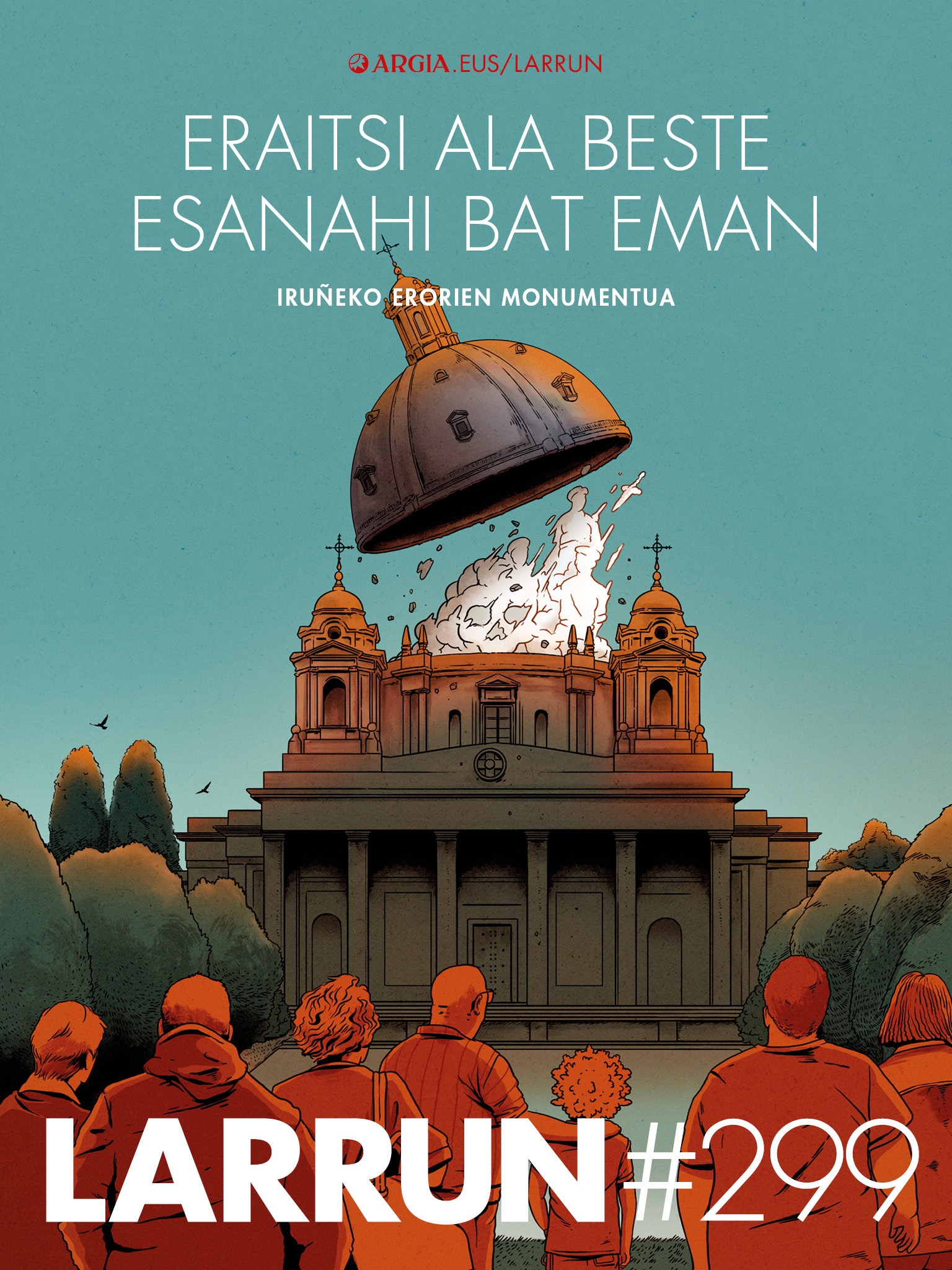

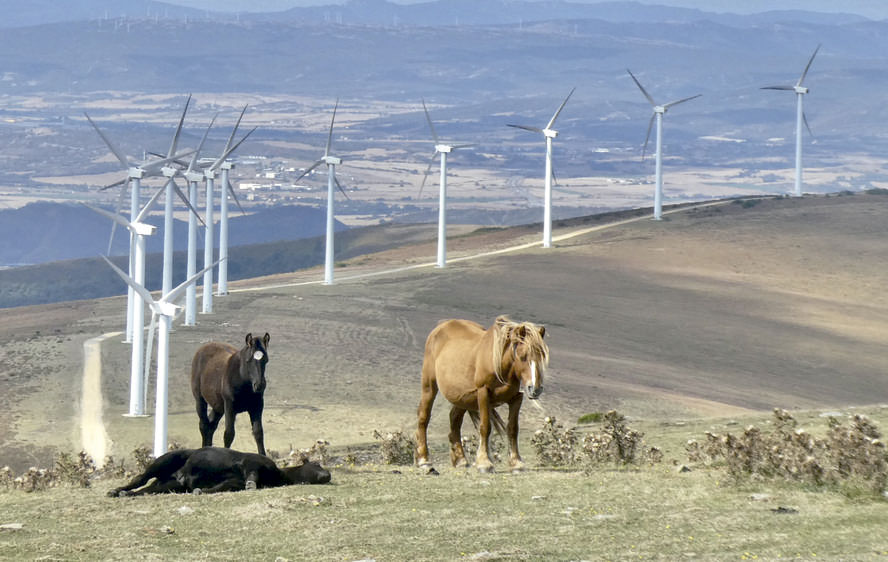
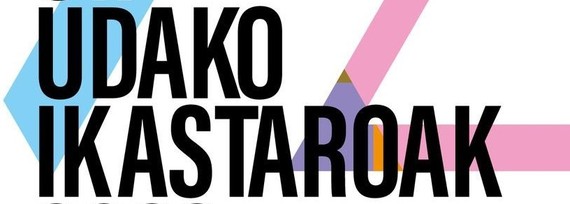
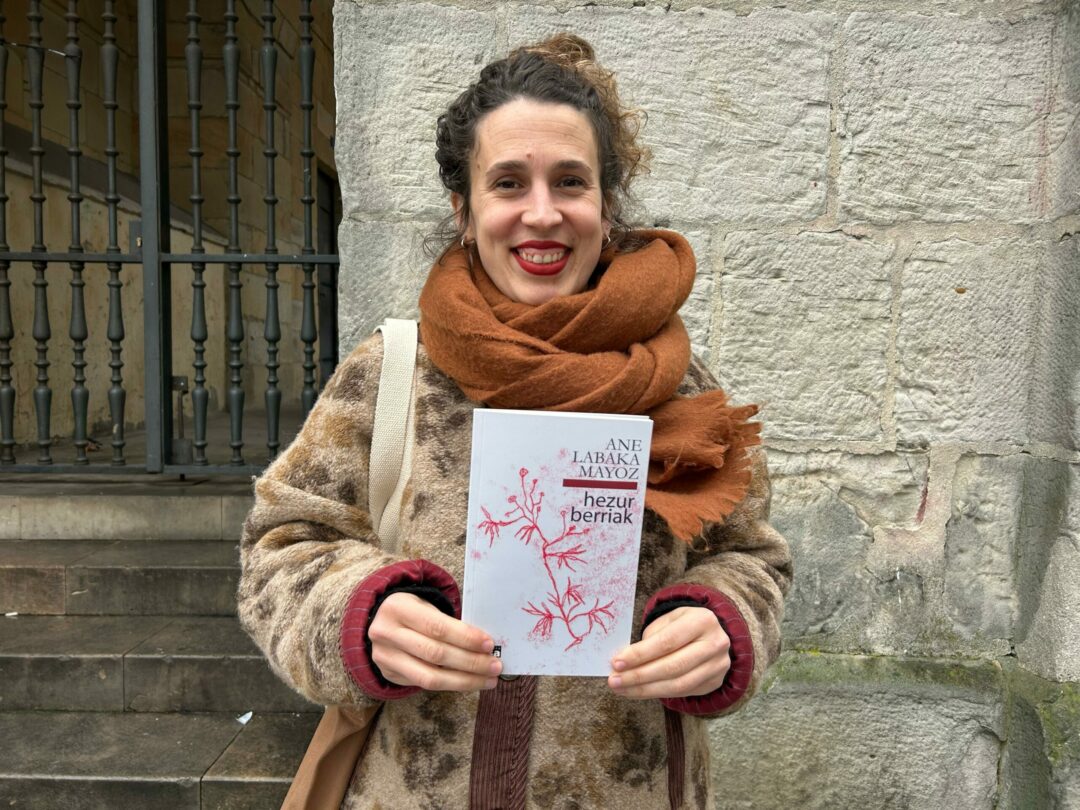

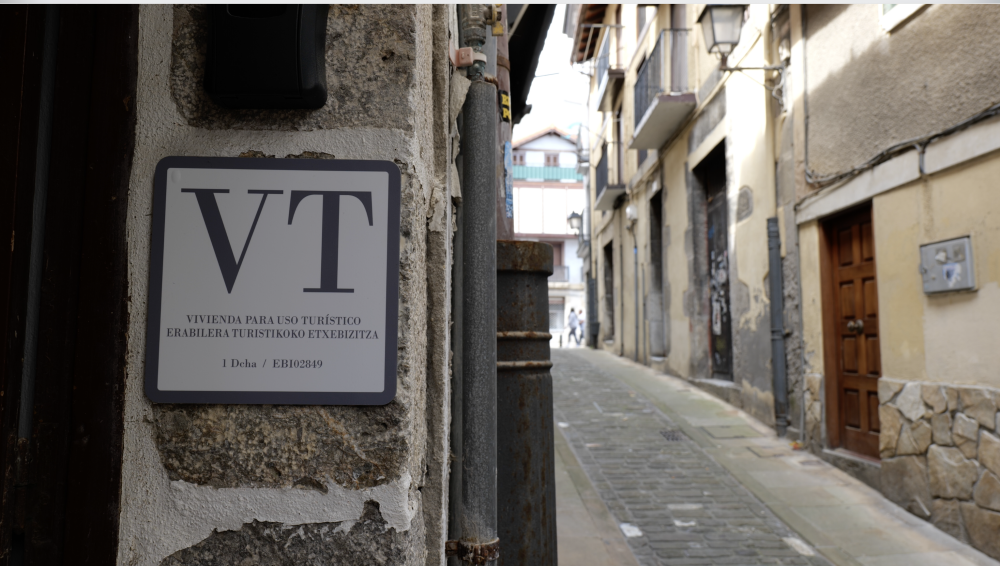
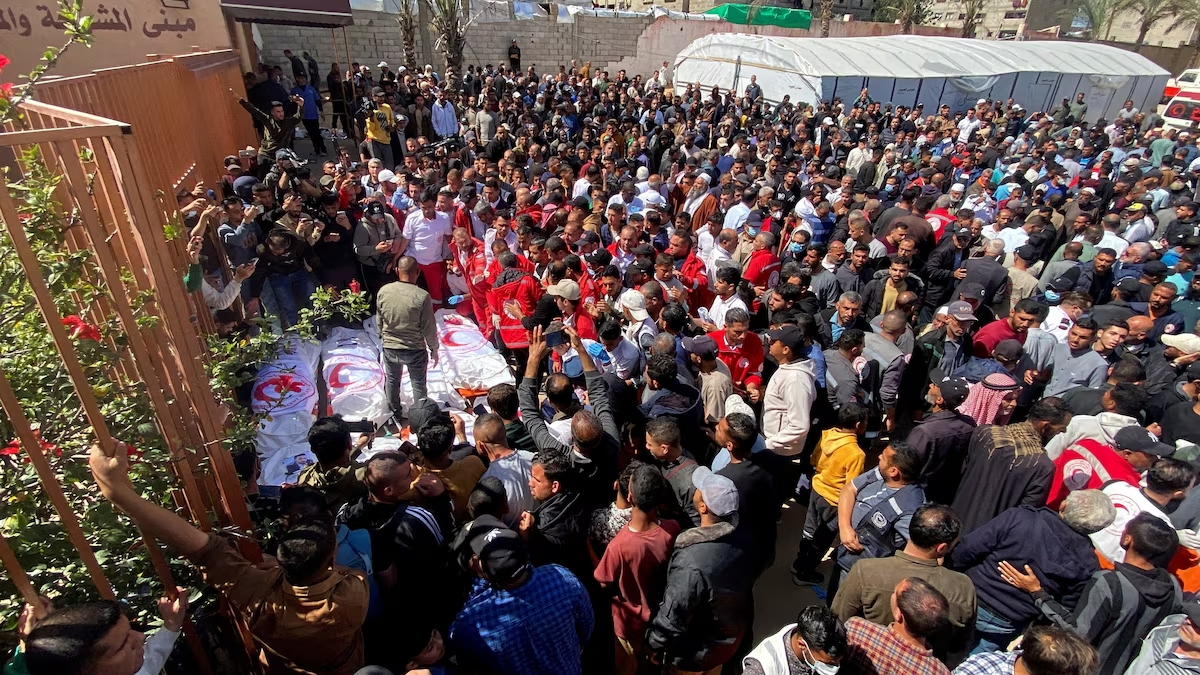
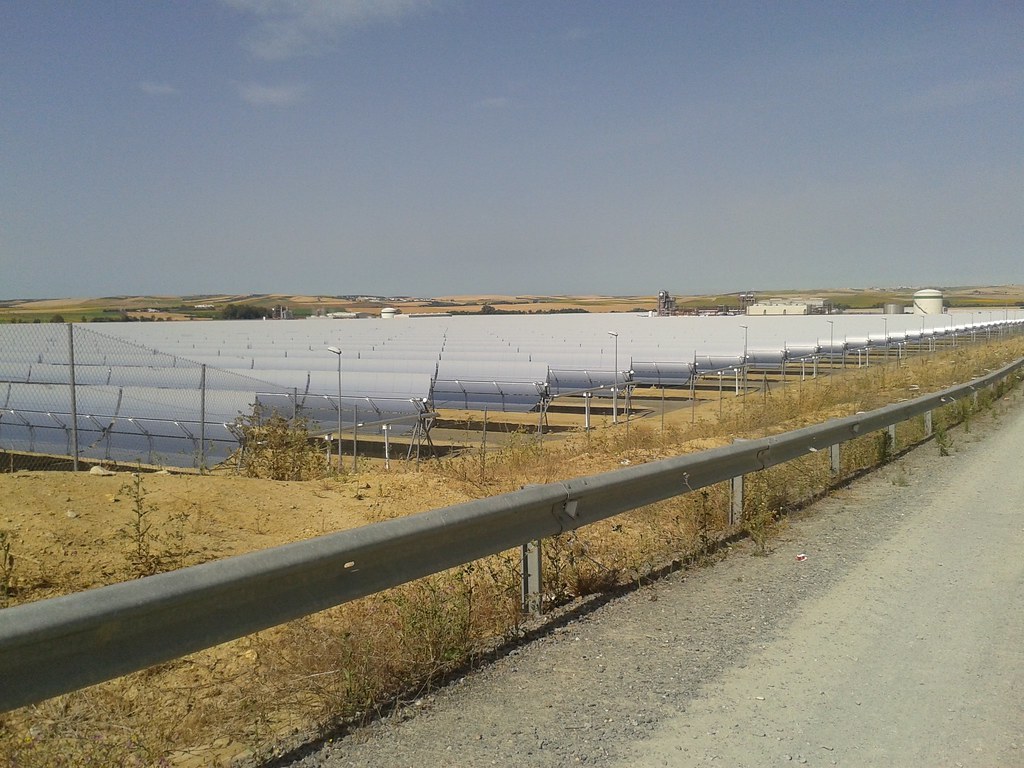
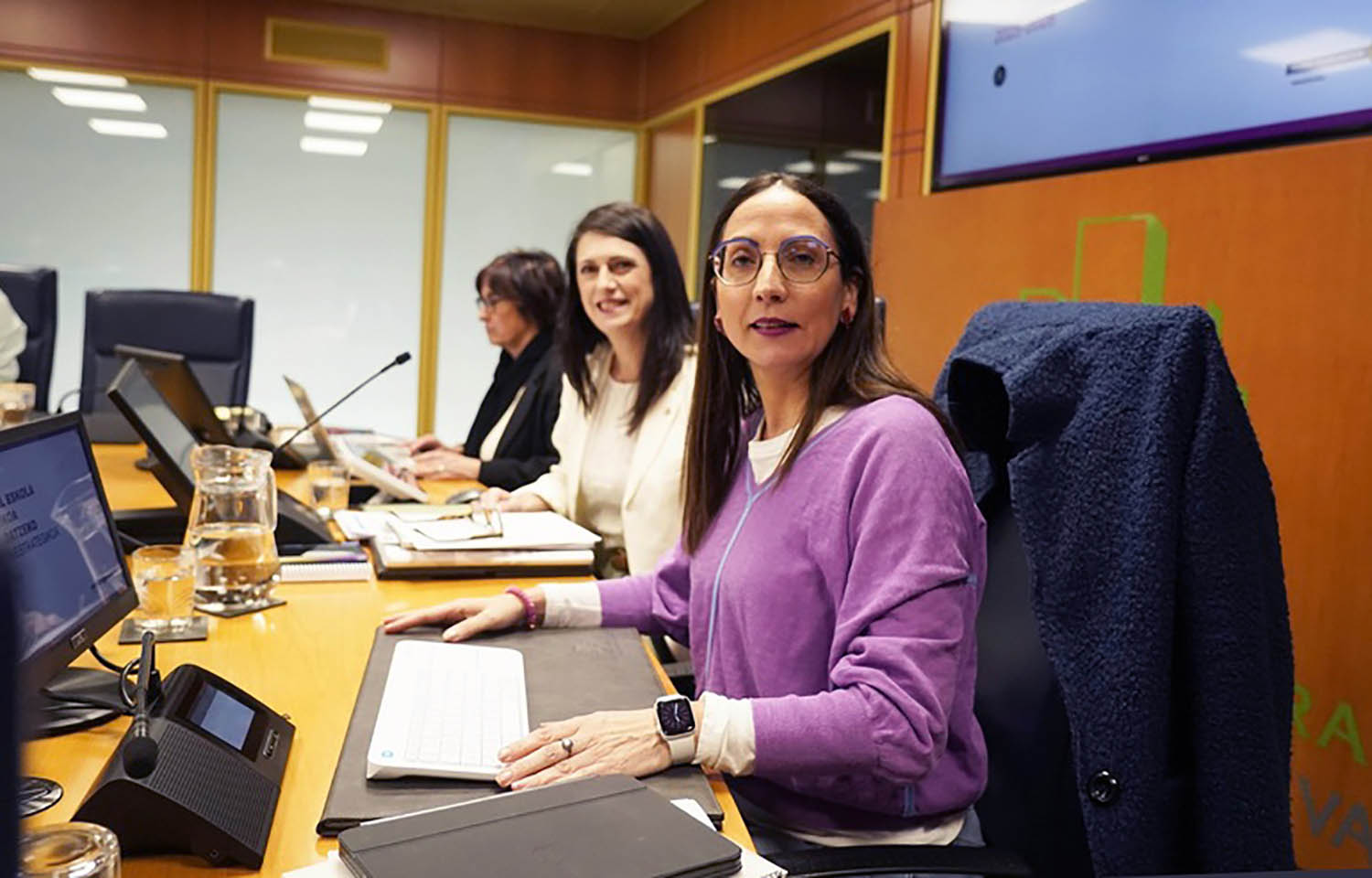

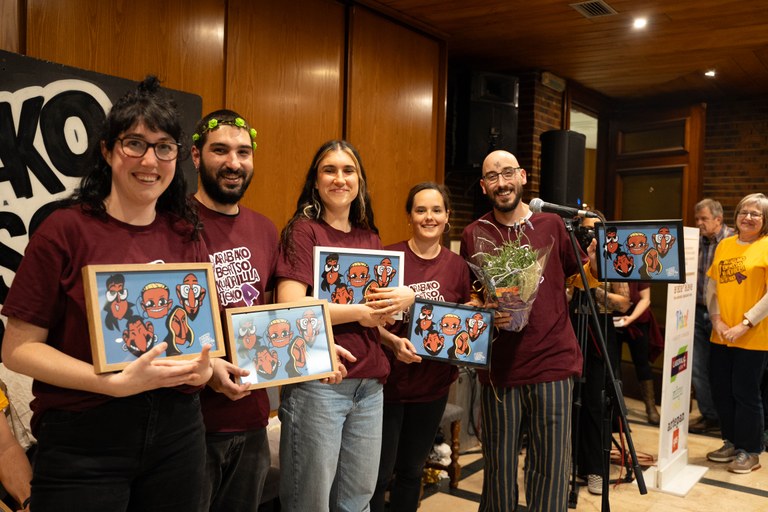
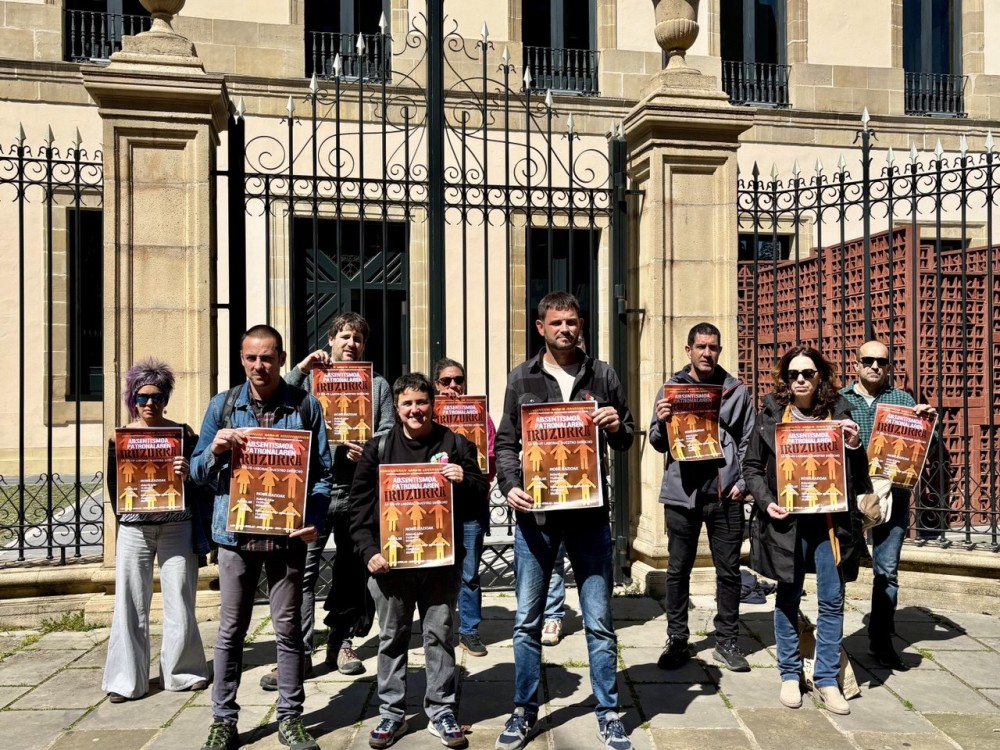

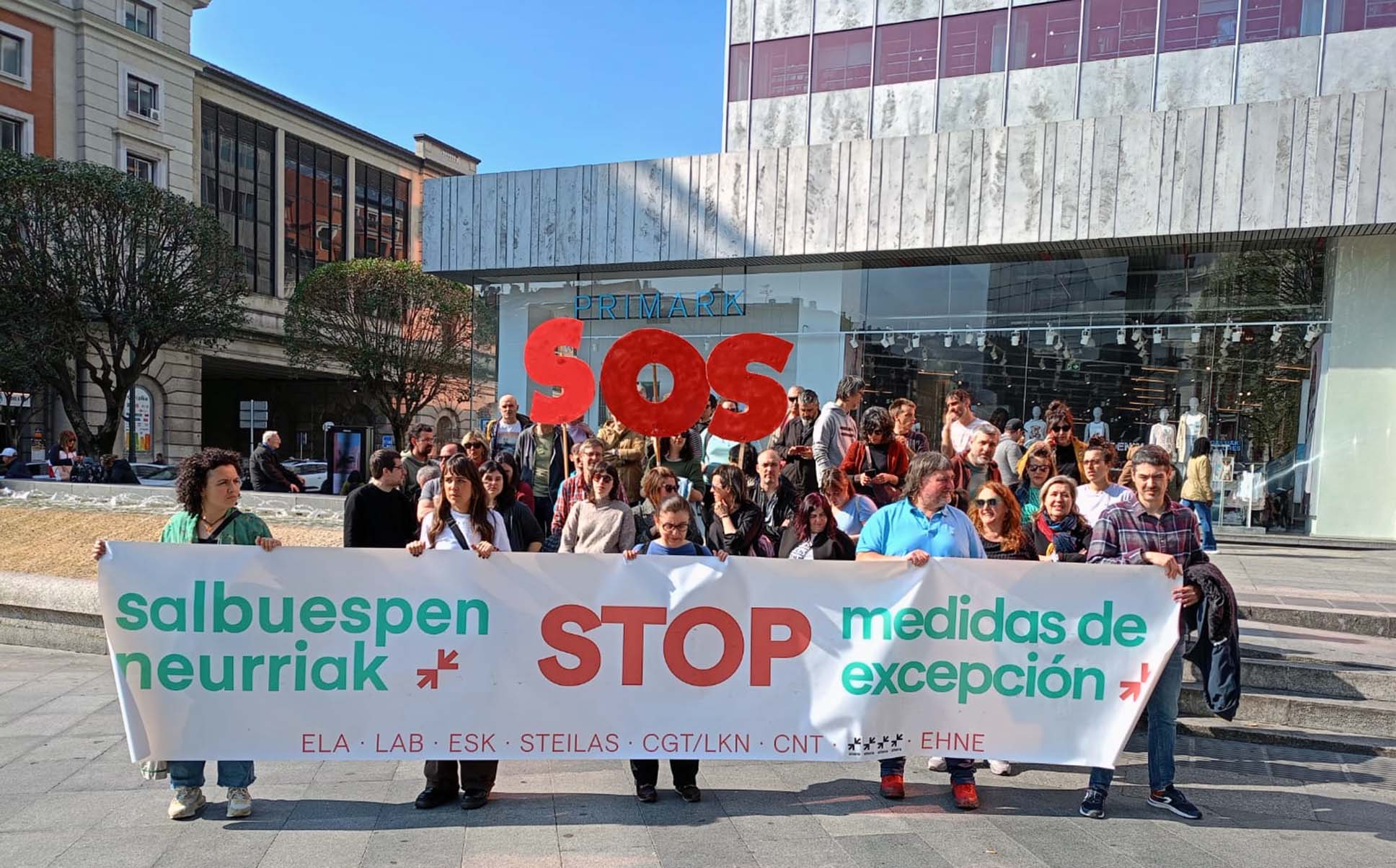
.jpg)